
The husband-and-wife team of Jean and Wayne Boyd have been owner-breeder-handlers of top Great Pyrenees for more than 40 years under the Rivergroves banner. They were the 2007 AKC Working Group Breeders of the Year. It is important to take your time and decide what your goals are before making breeding decisions. As a breeder, one begins with the highest-quality dogs possible. They should reflect the qualities you want to bring out in your puppies. In trying to minimize unwelcome surprises, you need thorough knowledge of the pedigree behind your dogs. You must fully understand the strengths and weaknesses in the pedigree and learn how these will be reflected through the sire and dam. Maybe the sire or dam didn’t exhibit the phenotype you had hoped to see in the offspring, and that should be noted.
Once the puppies are whelped and on their feet, we like to begin evaluation around 7 to 8 weeks of age. Don’t fall into the trap of feeling if it can’t be shown it will be good for breeding. You must also reevaluate your breeding stock from time to time. If a litter shows no improvement over the parents, perhaps it would be wise to retire the sire or dam or try another combination. The best breeders have a drive to enhance their lines with every breeding.
There are many pitfalls for the novice. You must learn to see the entire dog with all its faults, and remember nothing happens overnight. To reach your goal you must be prepared to compromise. You might breed to a dog with a less than perfect head but with a perfectly structured body and sound movement. You must think in terms of years and prepare for hard work and many disappointments. Successful breeders combine an artist’s eye for beauty, symmetry, and balance along with the ability to foresee the present as the road to the future. The great bloodlines will live forever as a blueprint for future generations.
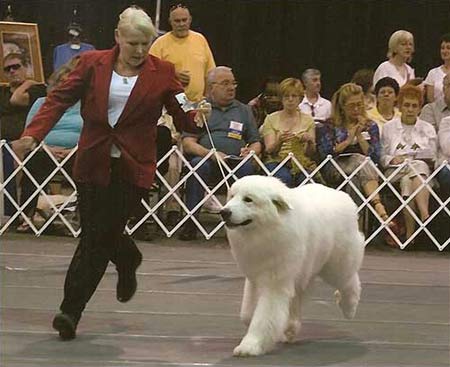
Breeding Great Pyrenees for the show ring is no different than breeding for pet companions. All puppies should be confident with good temperaments, correct breed type, good structure and balance. It is during observations and evaluations in the early weeks the potential show puppy becomes apparent: that will be the one with “attitude” as well as structure, balance, and type. There are many ways to look at puppies. I have found when they single-track when moving at 8 weeks they never really change. This is made possible by correct structure: a balanced front and rear with ample reach and drive. Always look for balance. They are working dogs, so you must remember their initial purpose and look for the dog who can withstand the stress of working. Their temperament must be confident, outgoing, fearless, and curious. Puppies with these traits make wonderful pets as well as show dogs.
We like to take all our puppies to puppy training classes for socializing and car/crate training. We keep it “fun” so they have a good experience. Here is where we start training for the show ring. We begin with stacking and gaiting, using show collars and bait and lots of praise.
To begin with, your show puppy has to have excellent breed type and I use the word “type” as overall conformation. With Great Pyrenees it has to have a certain elegance, correct movement with reach and drive, good angulation, and overall balance.
Another essential for my breed standard is a correct head and beautiful almond eyes. The eyes should be dark and have good fill. There are too many Pyrenees with large round eyes, large heads with too much stop, droopy lips and short deep muzzles appearing in the show ring all of which is contrary to our breed standard. If it looks like a white Newfoundland, it is not a correct Great Pyrenees. The head should be wedge shaped with no apparent stop. The ears should be set level with the eye and the mouth should have tight lips with good pigmentation. It takes many years for new breeders to know the correct look for a Great Pyrenees.
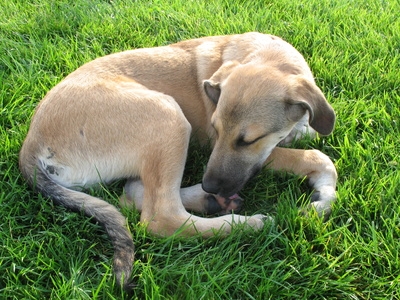 Herbal Remedies for Dog Allergies
Herbal Remedies for Dog Allergies
Herb
Herbal Remedies for Dog Allergies
Herbal Remedies for Dog Allergies
Herb
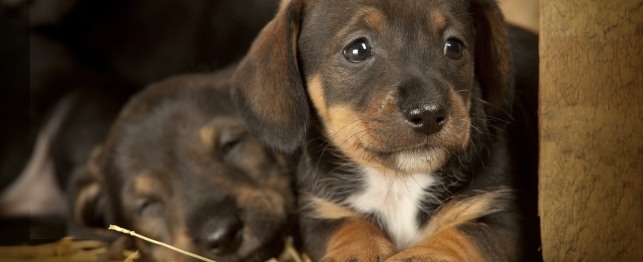 Adopting Puppies Before 8 Weeks - What You Should Know
Adopting Puppies Before 8 Weeks - What You Sh
Adopting Puppies Before 8 Weeks - What You Should Know
Adopting Puppies Before 8 Weeks - What You Sh
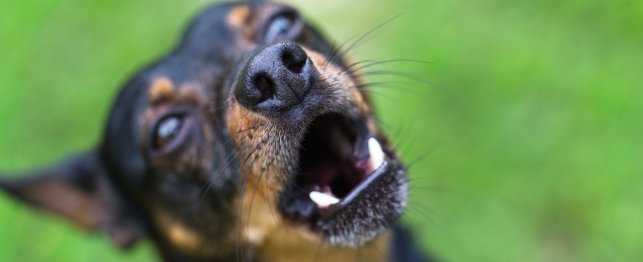 Bite Guard: Preventing Dog Attacks and Bites
Bite Guard: Preventing Dog Attacks and Bites
Bite Guard: Preventing Dog Attacks and Bites
Bite Guard: Preventing Dog Attacks and Bites
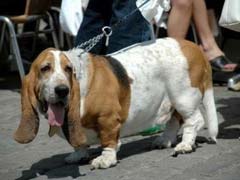 Dog Hip Dysplasia Treatment
Large
Dog Hip Dysplasia Treatment
Large
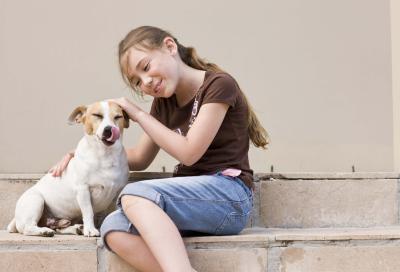 The Best High-Protein Dog Foods
The Best High-Protein Dog Foods
The Be
The Best High-Protein Dog Foods
The Best High-Protein Dog Foods
The Be
Copyright © 2005-2016 Pet Information All Rights Reserved
Contact us: www162date@outlook.com